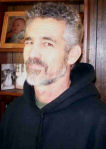 »
Discussion
»
Philosophy 101
»
Faster than light 2
»
Discussion
»
Philosophy 101
»
Faster than light 2
| Philosophy 101 |


|
Faster than light 2 |



|
|
rad802 Member
since 2008-04-19
Posts 279KY U.S.A. 
|
Faster than light This explanation is of a closed universe. An open universe cannot be visualised because every point in space is saddle shaped. Einstein did not know when he penned his famous theories, that space was stretching. In fact the universe is stretching or expanding from the three dimensions we know, into a higher dimension. We can not visualise this but we can visualise two dimensions expanding into three. It would look like the skin of a balloon. The skin of the balloon is just like a sheet of paper and has been called flatland, a two dimensional universe. If you put little dots all over it to represent the galaxies and you blow this balloon up, you will see the dots are moving away from each other just like the galaxies are doing. No matter which direction you look, you are looking into the past at a time when the universe was smaller. Now lets say this balloon has a north and south pole. If you are standing at the north pole and you look out across this two dimensional surface you will notice that the universe has no edge. If light were infinitely fast and you had a powerful enough telescope you could see the back of your head. But light takes time to travel. And so as we look out across space we don't see the surface of a sphere but a sight line spiraling in tword the center like the shell of a nautilus. Let's imagine that the universe is 5 billion light years around and the light leaving a star at the south pole travels two and a half billion years to reach us if the universe were not expanding. But because it is expanding, by the time the light reaches us six and three eighths billion light years later, the universe is now twenty billion light years around. If you graph this out on a sheet of paper, you will notice that space was stretching out so fast that it exceeded the speed of light. There is also another scenario in which space swirls faster than light. The space around a spinning black hole is being spun by the immense gravity at a rate faster than light. As it turns out, the rate that the universe is expanding is actually accelerating. This is not completely understood by physicist at this time. Fredkin has prposed a theory that you might find interesting. Digital physics suggests that there exists, at least in principle, a program for a universal computer which computes the evolution of the universe in real time. The computer could be, for example, a huge cellular automaton (Zuse 1967), or a universal Turing machine, as suggested by Schmidhuber (1997), who pointed out that there exists a very short program that can compute all possible computable universes in an asymptotically optimal way. Some try to identify single physical particles with simple bits. For example, if one particle, such as an electron, is switching from one quantum state to another, it may be the same as if a bit is changed from one value (0, say) to the other (1). A single bit suffices to describe a single quantum switch of a given particle. As the universe appears to be composed of elementary particles whose behavior can be completely described by the quantum switches they undergo, that implies that the universe as a whole can be described by bits. Every state is information, and every change of state is a change in information (requiring the manipulation of one or more bits). Setting aside dark matter and dark energy, which are poorly understood at present, the known universe consists of about 1080 protons and the same number of electrons. Hence, the universe could be simulated by a computer capable of storing and manipulating about 1090 bits. If such a simulation is indeed the case, then hypercomputation would be impossible. Loop quantum gravity could lend support to digital physics, in that it assumes space-time is quantized. Paola Zizzi has formulated a realization of this concept in what has come to be called "computational loop quantum gravity", or CLQG. Other theories that combine aspects of digital physics with loop quantum gravity are those of Marzuoli and Rasetti and Girelli and Livine. If you are interested in Physics from the Christian persective, Chuck Missler is the best source. http://www.khouse.org/articles_cat/2009/technical/space-time/ If you get a chance, read the following book. It is quite an investment in time but a thoroughly enjoyable read. Understanding Physics - by Isaac Asimov Volume 1 - Motion, Sound, and Heat The Search for Knowledge Falling Bodies The Laws of Motion Gravitation Weight Momentum Work and Energy Vibration Liquids Gases Sound Pitch Temperature Heat Thermodynamics Volume 2 - Light, Magnetism, and Electricity Mechansim Light Lenses Color Light Waves The Ether Relativity Quanta Magnetism Electrostatics Electric Currents Electromagnetism Alternating Current Electromagnetic Ratiation Volume 3 - The Electron, Proton, and Neutron The Atom Ions and Radiation The Electron Electrons Within Atoms Electrons and Quanta Electon Energy Levels Radioactivity Isotopes Nuclear Chemistry Artificial Radioactivity Nuclear Structure Nuclear Reactors Anti-Particles Other Particles |
||
| © Copyright 2009 RAD802 - All Rights Reserved | |||


|
⇧ top of page ⇧ |



|
| All times are ET (US). All dates are in Year-Month-Day format. | ||